

The Now Habit by Neil Fiore TEL 137. Therapy Worksheets. Videos, articles, and tips to help you succeed, from the world's leading experts. Conscious 2. Talks at Google. Mindfulness: Your Attention Please!
How to hack your body language for better interviews. Research interviews go best when participants feel comfortable and confident — they’re more verbal, more willing to explore, and more willing to play along.
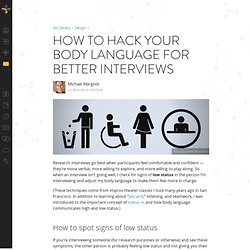
So when an interview isn’t going well, I check for signs of low status in the person I’m interviewing and adjust my body language to make them feel more in charge. (These techniques come from improv theater classes I took many years ago in San Francisco. TED. Business. Career Coach: 15 rules of etiquette for the cubicle. By Joyce E.

A. Russell August 14, 2011 Recently, a reader wrote in asking for guidance on the rules of etiquette for life in the cubicles. It can be easy to irritate others in those close open spaces, and co-workers who disregard office protocol and commit cubicle faux pas can affect productivity and stress levels. The cubicle evolved from the Action Office furniture system, invented by Robert Propst of Herman Miller in the 1960s, with the intention of giving employees flexible space and saving companies money.
Top Office Etiquette Rules: Pay Attention, and Be Nice. Yes, all the technological tools we use in the workplace these days have probably made breaches of office etiquette more common.
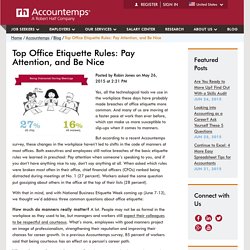
And many of us are moving at a faster pace at work than ever before, which can make us more susceptible to slip-ups when it comes to manners. But according to a recent Accountemps survey, these changes in the workplace haven’t led to shifts in the code of manners at most offices. 7 Power Tools for Better Problem Solving. If you don’t want to continue having the same problems, you’ve got to solve the ones you’ve got.
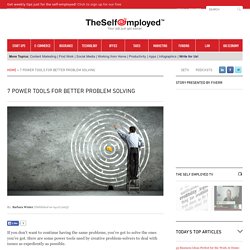
Here are some power tools used by creative problem-solvers to deal with issues as expediently as possible. Know which problems are yours to solve. Suppose your flight is delayed due to mechanical problems. Obviously, that’s not a problem you can solve, but it may create some new ones that are yours to handle such as notifying the folks who are expecting you or staying calm during the delay. How Successful People Work Less and Get More Done.
CAN WE IMPROVE OUR BRAIN FUNCTIONS ● Prof. Ian Robertson TCD.
'Relaxation' in Self Development. Free e-Books. Etiquette. MInd Sculpture: Your Brain's Untapped Potential: Ian Robertson: 9780553813258: Amazon.com: Books. Positive psychology. To Martin Seligman, psychology (particularly its positive branch) can investigate and promote realistic ways of fostering more joy in individuals and communities.
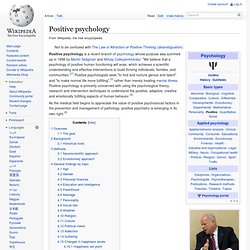
Positive psychology is a recent branch of psychology whose purpose was summed up in 1998 by Martin Seligman and Mihaly Csikszentmihalyi: "We believe that a psychology of positive human functioning will arise, which achieves a scientific understanding and effective interventions to build thriving individuals, families, and communities. Optimism. Berlin Wall Monument (West view) – the west side of the Wall is covered with graffiti that reflects the hope and optimism post-1989 The word is originally derived from the Latin optimum, meaning "best.
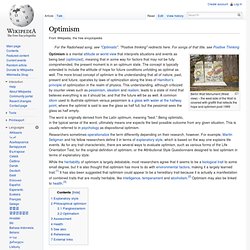
" Being optimistic, in the typical sense of the word, ultimately means one expects the best possible outcome from any given situation. This is usually referred to in psychology as dispositional optimism. Researchers sometimes operationalize the term differently depending on their research, however. For example, Martin Seligman and his fellow researchers define it in terms of explanatory style, which is based on the way one explains life events. Guided imagery. The practitioner or teacher may facilitate this process in person to an individual or a group.

Alternatively, the participant or patient may follow guidance provided by a sound recording, video, or audiovisual media comprising spoken instruction that may be accompanied by music or sound.[16] The mind's eye[edit]